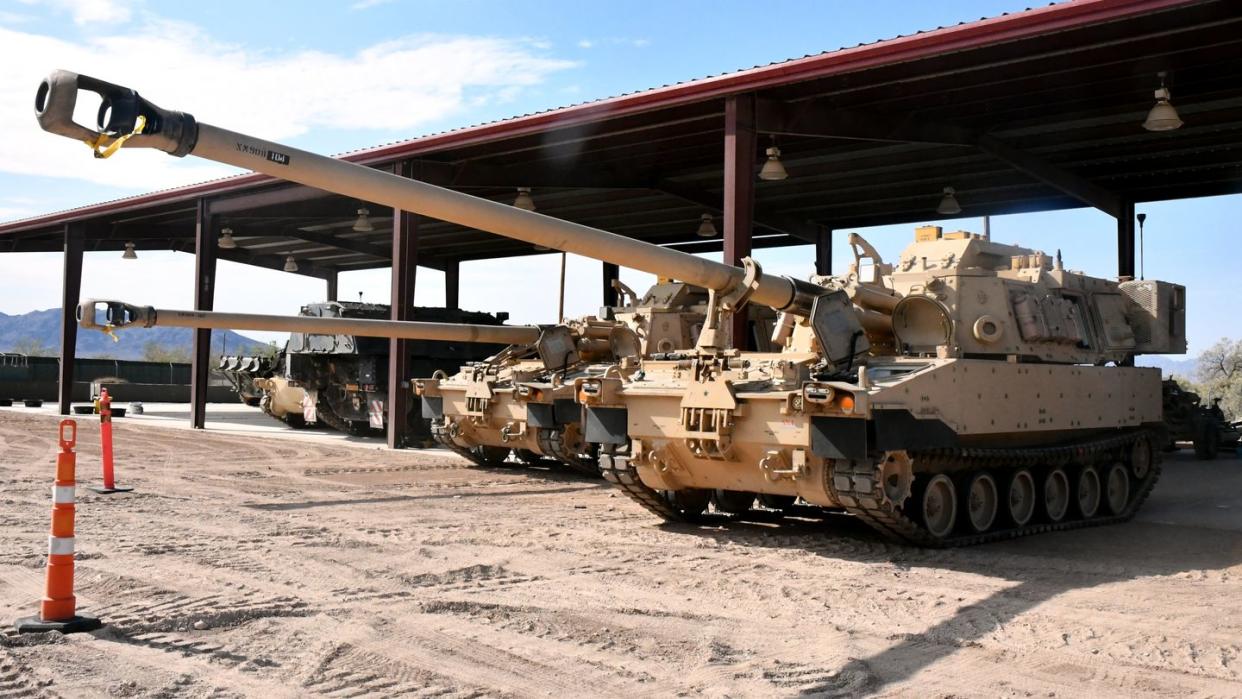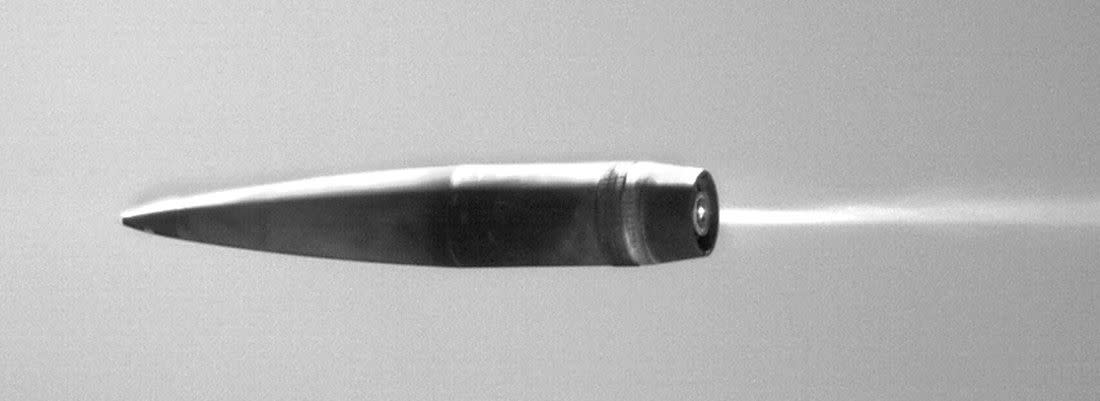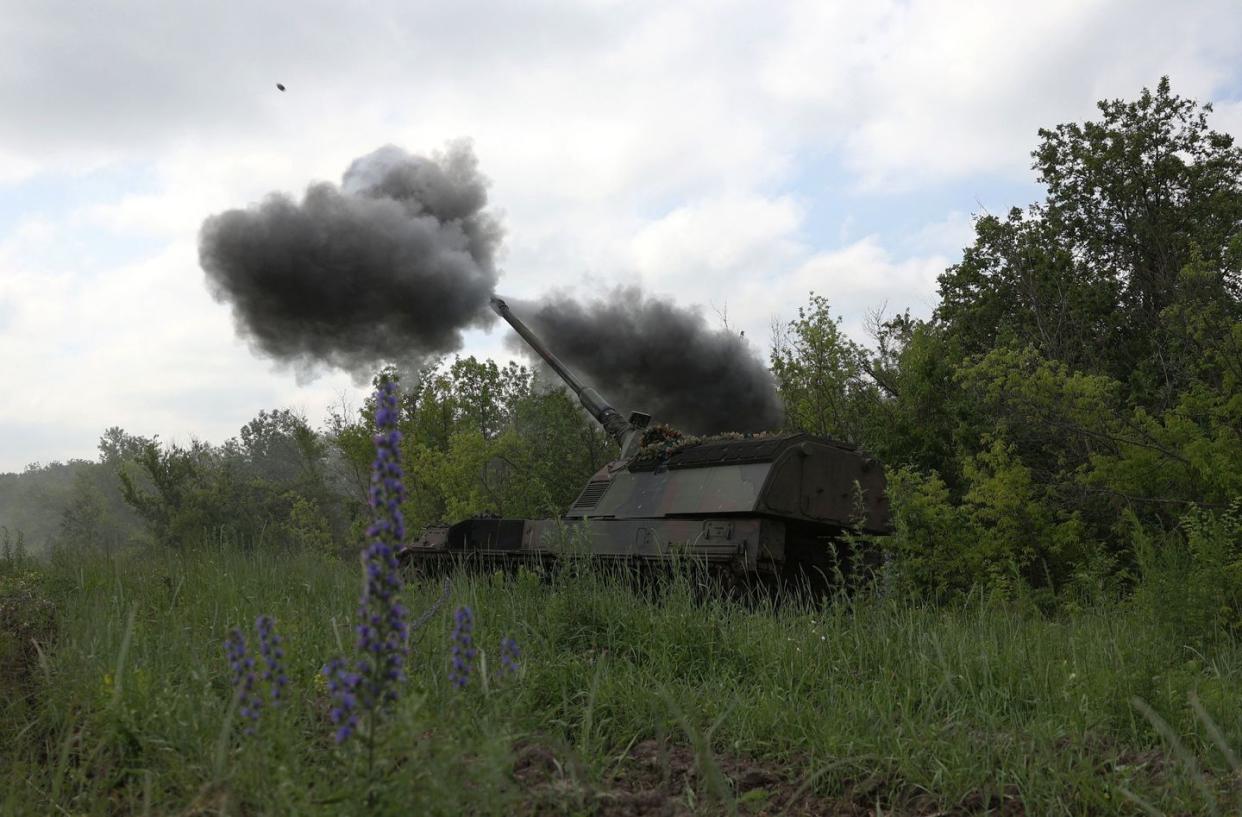The Army’s Long-Range Howitzer Has Met Its Achilles Heel

Budget documents released in March show that the Army’s ambitious plans to double the range of its M109 Paladin armored howitzer artillery have ignominiously bit the dust, despite delivery of functioning prototypes that fired test shots at targets out to 61 miles away.
The prototype M1299 Extended Range Cannon Artillery (ERCA) sported a longer 58 caliber barrel that could generate the necessary internal pressure to spit out 155-millimeter shells at targets dozens of miles away. But it couldn’t execute those long-distance shots without breaking its barrel faster than usual.
Six years ago, the U.S. Army unveiled its Long Range Precision Fire program, which sought to dramatically extend the range of its artillery and land-attack missile forces. That would give ground commanders better attack options while reducing risks of enemy artillery being able to retaliate. After all, nothing is safer than attacking the enemy from such a long range that they simply can’t reach you.
ERCA was a key item in those plans, seeking to nearly double the maximum range of the mainstay M109 Paladin self-propelled howitzer from the current 24 miles (using rocket-assisted projectiles) to over 40 miles.
This range increase was to be achieved through the use of a new pressure-tolerant XM1113 rocket-assisted projectile (which entered service in 2016), combined with juiced up propellant called the XM654 SuperCharge, and a lengthened 58 caliber XM907 gun tube (up from the M109’s usual 39-caliber gun) mounted on a vehicle called the M1299.
The M1299 mated the XM907 gun to the chassis of the latest variant of the M109 armored howitzer called the M109A7 PIM (for ‘Paladin Integrated Management’), which introduced the hull of the Bradley fighting vehicle. A true Ship of Theseus, the M1097A7PIM no longer has either turret or hull in common with the original M109 Paladin, which was introduced to service in the 1960s.
The XM907 gun’s 29.5-meter tube could increase the pressure pushing the shell out of the barrel at up to three times the speed of sound, thereby increasing the range.
More images of the US new M1299,including its new XM1155 shell which has a tail rocket and glides in on the target (range 75 miles). Operational Assessment starts this year. via https://t.co/C30WgQkkCU
our website: https://t.co/TyjE8Hw11x pic.twitter.com/06uoMU4o2K— LASD - Land Air Sea Defense (@LASD_off) January 24, 2023
Already, in 2018, the XM907 achieved a 38.5-mile test shot firing from the carriage of an M777 towed howitzer. Two years later, in March of 2020, an M1299 vehicle also carried out test shots—including one that precisely landed on a van 40.4 miles away.
Then, in December—after two range shots—it blasted a target from 43 miles away using an M982 Excalibur GPS/inertial-guided smart shell. On regular M109s, that shell is confined to a maximum range of 25 miles.

A full battalion of 18 M1299 prototypes—plus two more for destructive testing—was delivered to for operational testing by 2023. From there, the Army hoped for a production order to resurrect a retired tier of very-long range artillery in the form of M107 guns and M110 howitzers. These are used for hitting high-value targets deep behind enemy lines such as air defense systems, command posts, bridges and of course enemy artillery.
Ramjet and sabot shells
The Army also planned to double the range of the M1299 again to 70-80 miles by shooting even more exotic 155-millimeter Extended Range Artillery Projectile (ERAP) shells—to be designated the XM1155, once procured.
Both Boeing/Nammo and Raytheon/TNO are offering shells powered by a solid fuel ramjet engine, which are very efficient for propelling vehicles already moving at supersonic speeds (as the onrushing air is used for compression). That’s problematic for an airplane trying to takeoff from the ground at a starting speed of 0 miles per hour, but not an artillery shell propelled out of a gun barrel at supersonic speeds. Furthermore, ramjets are lightweight and don’t need to carry oxidizer like traditional rocket-propelled shells.
American experimental Solid Fuel RamJet (SFRJ) for XM1155 Extended-Range Artillery Projectile (ERAP) pic.twitter.com/gHQoLtALCd
— Caesar (@Ninja998998) June 17, 2021
Boeing’s Ramjet 155 shell fired by an M1299 apparently attained record-breaking range in a test last fall.
155mm caliber long-range artillery shell with a ramjet at the #IDEX2023
US Boeing and Nammo a Norwegian company, are collaborating to develop the Extended-Range XM1155 Artillery Projectile (ERAP) for 155mm artillery systems as part of the Pentagon's program. pic.twitter.com/gjV99b7Fp3— International Defence Analysis (@Defence_IDA) February 23, 2023
BAE Systems is also competing with a non-ramjet munition called the XM1155-SC—originally derived from the HVP-ER hypervelocity projectile, developed for a canceled Navy railgun. This ‘sabot’ design concentrates the energy of a big shell into a smaller, lighter, sub-caliber munition released after firing to achieve superior thrust-to-weight ratio and enable a max range of 68 miles.
This shell—dubbed the XM1155 and fired from a modified XM907E2 gun—achieved a range of 68 miles.
BAE Systems #XM1155SC#AUSA2023 pic.twitter.com/JFZBq41FkG
— 𝔗𝔥𝔢 𝔇𝔢𝔞𝔡 𝔇𝔦𝔰𝔱𝔯𝔦𝔠𝔱 🇬🇪🇺🇦🇺🇲🇬🇷 (@TheDeadDistrict) October 14, 2023
Supposedly, XM1155-SC could cost “less than $85,000”. That’s not cheap enough to be used casually en masse—at least, compared to ‘dumb’ shells costing $3,000 each. But it’s less than the Excalibur round’s current cost, and thus may fall within the realm of viability as a silver-bullet weapon for picking off valuable point targets (individual armored vehicles, radars, command posts, depots, etc...)
The Army was also developing an Advanced Autoloader, which will reduce the crew on its armored howitzers and more than triple the ‘surge’ rate of fire from 3 shells per minute to 10 per minute. However, balancing the long ERCA gun was already difficult, and became even more so with a full-sized autoloader. This compelled engineers to reduce the autoloader’s magazine from 31 shells to just 23.
Downfall of the M1299
But 2023 came and went, and the M1299s proved to be the only program—out of the 24 that the Army promised to field by 2023—that went undelivered. The problem turned out to be one of barrel wear: the powerful gun shooting powerful shells was powerfully wearing through its gun barrel.
Repeated firing gradually wears down all artillery weapons, and that wear is accelerated during both high fire rates (which rapidly overheat the barrel and cause warping) and long-range shots (using the maximum number of charges which inflict maximal kinetic stress on the barrel).
Worn barrels become more and more inaccurate, and those over-used beyond safety tolerances risk exploding, which can harm crew and cause the barrel to ‘petal’ dramatically. Such overuse is especially common in high-intensity conflicts like the one in Ukraine.
While there is no escaping the need to replace the barrels of artillery systems and tanks, manufacturers still try to optimize barrel life to last through as many shots as possible. They do this through the use of metallurgical innovations and design features, like thermal sleeves to regulate barrel temperature.

The problem with the XM907 gun, apparently, was that the stress produced by its shells was wearing through the XM907’s barrel far too rapidly, meaning that a new and expensive barrel would have to be swapped in with impractical regularity. The simple fix of increasing barrel thickness would cause too much weight gain, which risked unbalancing the already precariously balanced vehicle.
Specially tempered barrels aren’t cheap, and having to pull guns off frontline combat operations for re-barreling is obviously less than ideal. Fighting in Ukraine has shown massive artillery usage rates that too rapidly exceed the barrel lives of the NATO 52-caliber howitzers donated to Ukraine.
So, while the M1299 could belt out some impressive long-distance shots, it would too soon need to be pulled out of operational service for an expensive and time-consuming barrel replacement.
The Army had not found a solution to the excessive wear by the time prototypes were delivered. The Government Accountability Office issued a report warning that the program had already inflated by $78 million over estimated budget, and was behind schedule. That lead to the 2024 decision to pull the plug on what had once seemed like a promising, fast, and affordable project.
Perhaps a few more years and millions of dollars of spending could have fixed the problem, but there was a risk ERCA would suck down too much additional money without generating a cost-efficient solution. The service preferred to go back to the drawing board, and is requesting proposals for alternative solutions.
While loss of long barrel guns is a blow to the Army’s artillery branch, the service still wants its 40-mile strike capability. And going by program rhetoric, it now appears more inclined to select a relatively mature, off-the-shelf solution than risk trying to develop a new design again. That may involve fitting a future M109 variant with the 52-caliber length 155-millimeter barrels already used in several Euroupean howitzers like the Panzherhaubitze 2000.

The XM1155 shell, when combined with 52- or even the current 39-caliber howitzers, might still attain impressive ranges—even if they still fall short of those achieved with the M1299 and XM907 gun.
The Army also has several other avenues through which they can perform deeper indirect strikes, including MLRS rocket artillery, drones, new helicopter-launched missiles, and tactical ballistic missiles like the new Precision Strike missiles. While shells are cheaper and theoretically more sustainable than these weapons, the expense of the R&D and unit costs of the extended range artillery must not rise so high as to obviate the price advantage. transparent quantity and sustainability have proven the decisive factors in Ukraine’s artillery wars so far.
You Might Also Like
